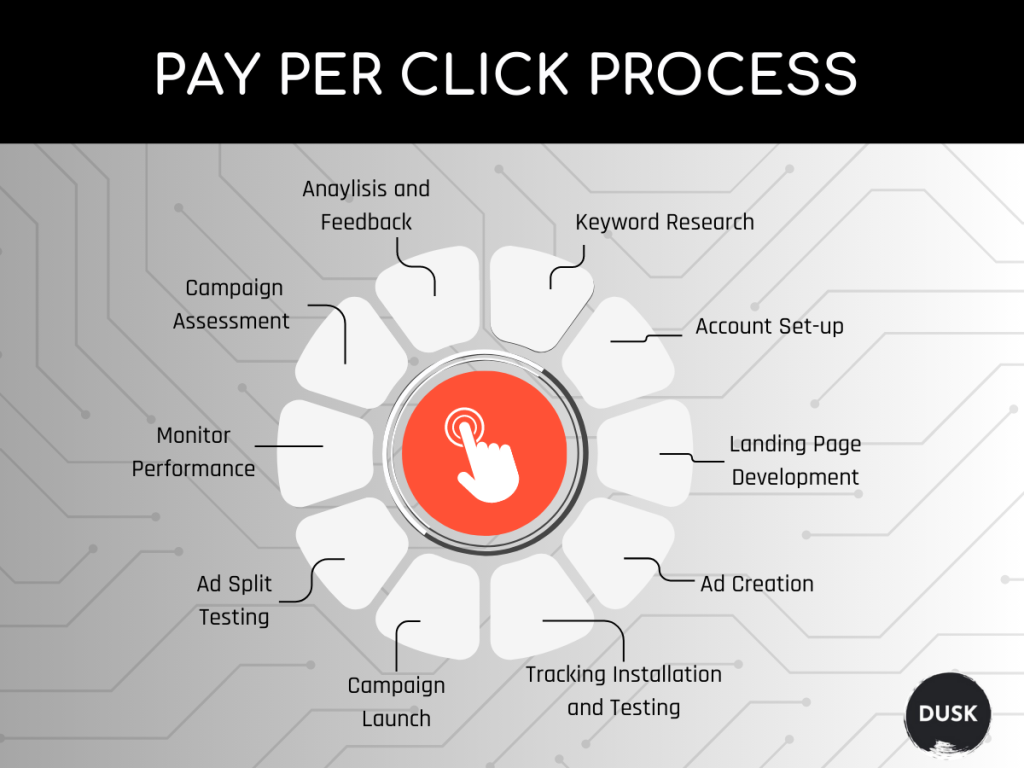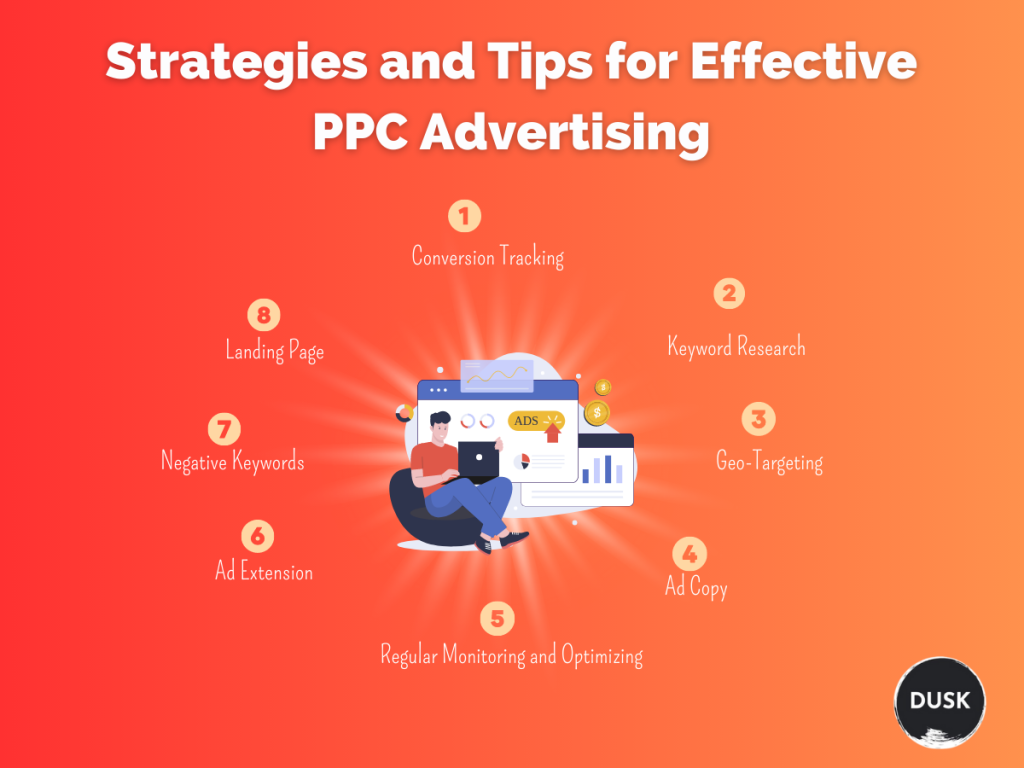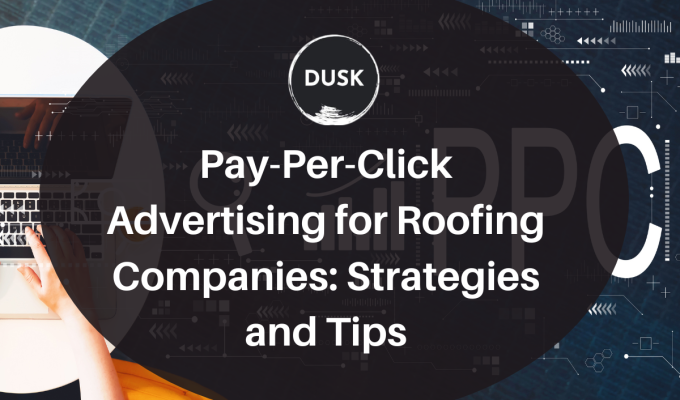Are you a roofing company looking to expand your online presence and generate more leads? Pay-Per-Click advertising for roofing companies might be the solution you’ve been searching for.
Pay-per-click (PPC) advertising has become one of the most popular and effective forms of digital marketing. In a world increasingly relying on search engine use, roofing companies can find significant value in integrating PPC advertising into their marketing strategies.
By leveraging the versatility of PPC advertising, roofing companies can gain improved visibility, increased conversions, and a solid return on investment (ROI). This article will explore strategies and tips for effective PPC advertising tailored to roofing companies
Table of Contents
Understanding PPC Advertising
Pay-Per-Click (PPC) is an online marketing model that’s all about buying visits to your website. Unlike organic search engine optimization (SEO), which relies on your content’s natural relevance to search queries, PPC allows you to expedite the process. Every time a user clicks on your advertisement, you pay a fee, effectively purchasing traffic rather than earning it organically.

Google Ads stands as the most prevalent platform for PPC advertising, dominating the digital advertisement landscape. Google’s massive reach and advanced targeting capabilities make it an attractive option for many businesses. The platform operates on a bidding system, where businesses bid on keywords relevant to their products or services.
When a user performs a search query containing your chosen keywords, Google dips into the pool of advertisers and chooses a set of winners to appear in the valuable ad space on its search results page. These winners are determined based on a combination of factors, including the quality and relevance of their keywords and ad campaigns and the size of their keyword bids.
PPC for Roofing Companies
Pay-per-click (PPC) advertising presents a unique opportunity for roofing companies. It allows them to specifically target audiences who are actively seeking roofing services in their locality. This makes PPC highly effective in generating quality leads and providing a great return on investment (ROI).
PPC’s main advantages include control over when and where ads appear, immediate results, actionable data, and integration with other digital marketing strategies. For instance, a roofing company can schedule its ads to display to homeowners in a particular city during business hours.
In addition, PPC provides crucial data to fine-tune marketing strategies. It’s possible to see which keywords and ads perform the best, aiding strategic decision-making. When paired with SEO, PPC can help roofing companies dominate their target market. In short, a well-managed PPC campaign can be a powerful tool for growth for roofing companies.
Strategies and Tips for Effective PPC Advertising
To maximize the impact of your PPC advertising campaigns, focus on creating compelling ad copy and optimizing landing pages for a seamless user experience. Continuously monitor and analyze campaign performance to make data-driven decisions for ongoing improvement. Below are some of the strategies and tips for effective PPC advertising:

- Keyword Research
Keyword research is the foundation of any PPC campaign. Identify the keywords potential customers will likely use when searching for roofing services. Google’s Keyword Planner can be a handy tool for this purpose. Remember to consider long-tail keywords, which are specific phrases that customers might use. For example, “roof repair service in Alabama” or “best roofing contractors near me”.
Once you’ve identified relevant keywords, it’s time to create compelling ad copy. Advertisements should be clear, concise and include a call-to-action that prompts the user to engage with your business. Incorporating your targeted keywords into the ad copy naturally is crucial, as this can help improve the ad’s visibility on search engines.
For instance, if one of your key phrases is “emergency roof repair,” you might craft an ad headline like “Need Emergency Roof Repair? Contact Us Now!” Make sure to highlight what makes your roofing services unique and why customers should choose you over your competitors.
- Geo-Targeting
Most roofing companies serve specific areas. Geo-targeting allows you to display your ads to customers in certain locations. For example, a roofing company based in Alabama would want its ads to show up for users in and around the Alabama area. This strategy can maximize the efficiency of your advertising budget and increase the likelihood of reaching potential customers.
In addition to geo-targeting, it’s essential to consider the timing of your ads. Utilize ad scheduling to show your ads at the times when potential customers are most likely to be searching for your services. For instance, people might seek out roofing services during regular business hours or in the aftermath of a significant weather event.
- Ad Copy:
Your ad copy should be compelling and concise. Highlight the unique selling points of your service, such as free estimates, warranties, or special promotions. A strong call-to-action (CTA) is essential – it should compel users to click on your ad. For instance, “Call Now for a Free Estimate!”
After creating an effective CTA, providing a seamless user experience post-click is vital. This means directing users to a well-designed landing page that is relevant to your ad and easy to navigate. The landing page should include pertinent information about your services, evidence of your expertise, such as customer testimonials or certifications, and clear instructions on how users can avail themselves of your services.
For instance, if your CTA is “Call Now for a Free Estimate!”, ensure there’s a clear, easy way for visitors to do just that on the landing page. This could be through a prominently displayed phone number or an easy-to-use contact form. Remember, the goal is to make the process of engaging with your business as simple and straightforward as possible for potential customers.
- Landing Page:
Your PPC ad is only as good as the landing page it directs to. Ensure the landing page is relevant to the ad and keyword, contains informative and persuasive content, and has a clear call to action. This could be a phone number, contact form, or online booking system. Remember, the goal of the landing page is to convert the visitor into a customer.
To increase the conversion rate, ensure that your landing page is visually appealing and easy to navigate. Optimize it for mobile users as well since a large percentage of searches come from mobile devices. The loading time of your page is also critical – faster pages provide a better user experience and can improve your ad’s performance.
Lastly, continuously test and tweak your landing page for better results. A/B testing involves changing one element at a time (such as headlines, images, or CTA text) and comparing performance, which can be a highly effective method for optimizing conversion rates. Remember, every detail on the landing page can influence whether a visitor turns into a customer.
- Negative Keywords:
While you want your ad to appear for relevant searches, there will likely be related keywords for which you don’t want your ad to appear. These are called negative keywords. For example, if you only offer commercial roofing services, you might include “residential roofing” as a negative keyword.
Integrating negative keywords into your PPC campaign is a strategic way to refine your targeting and prevent wasted spend on irrelevant clicks. This process requires continuous monitoring and updating to ensure optimal performance. It’s also important to regularly analyze the search terms that trigger your ads.
This can help you identify additional negative keywords that you may not have initially considered. For instance, terms such as “DIY roofing repair” or “roofing jobs” could be added to your negative keyword list if your primary focus is selling professional roofing services.
- Ad Extensions:
Google Ads offers ad extensions that provide additional information and create more reasons for people to choose your business. These can include phone numbers, locations, additional website links, or customer reviews. Using these can increase the visibility of your ad and the click-through rate (CTR).
Ad extensions are an effective way to maximize the potential of your PPC campaign. They make your advertisement more informative and occupy more real estate on the search results page, making your ad more noticeable.
For example, a location extension could show your business address, helping local customers find you more easily. Call extensions can add a phone number or call button to your ad, making it simpler for customers to reach out. Review extensions can showcase positive feedback from customers, enhancing your credibility.
Furthermore, site link extensions can direct users to specific pages on your website, such as ‘Services’, ‘Testimonials,’ or ‘Contact Us.’ These enhancements can significantly improve user engagement with your ad, thereby boosting your CTR and overall campaign success.
- Conversion Tracking:
Implementing conversion tracking is crucial to measure the effectiveness of your PPC campaign. Whether a conversion for your business is a form submission, phone call, or booking, Google Ads provides tools to track these actions. This data can help you optimize your campaign and improve your return on investment.
Conversion tracking can provide invaluable insights into the success of your PPC campaign. By monitoring which ads and keywords lead to valuable customer actions, you can fine-tune your campaign and allocate your budget more effectively.
Additionally, using Google Ads’ conversion tracking tools can enable you to set up automated bidding strategies, where Google’s AI will adjust your bids in real-time to maximize conversions within your budget.
Regularly reviewing and analyzing your conversion data can inform strategic decisions, such as which ad copy resonates best with your audience or which geographic locations yield the highest return, thereby continually improving the efficiency and profitability of your campaign.
- Regular Monitoring and Optimization
PPC is not a set-it-and-forget-it type of advertising. It requires regular monitoring and adjustments to achieve the best results. Experiment with different keywords, ad copies, and landing pages to see what works best. Adjust bids based on time of day, day of the week, and device type to optimize performance.
The dynamic nature of PPC advertising calls for a hands-on approach to campaign management. Regular testing and data analysis allow for the fine-tuning of various elements. A/B testing can help determine the most compelling ad copy while adjusting keyword bids can optimize the cost-effectiveness of your ads.
Seasonal trends, shifts in consumer behavior, and changes in the competitive landscape can all affect the performance of your campaign and should be accounted for in your strategy. The more data you gather, the more effectively you can adapt your PPC strategy to maximize your return on investment. Remember, a successful PPC campaign thrives on continuous learning and adaptation.
Conclusion
Pay-Per-Click (PPC) advertising presents a powerful opportunity for roofing companies to enhance their online presence, reach potential customers, and drive business growth. Roofing businesses can significantly amplify their digital reach and ROI by leveraging the strategies and tips above.
However, remember that the ultimate goal is not just to generate clicks but to convert those clicks into loyal customers. So, while PPC can boost website traffic, the focus should always be on delivering quality services to transform these leads into satisfied customers.
Although mastering PPC advertising requires time and effort, the potential rewards in terms of increased leads, customers, and growth make it a worthwhile endeavor for roofing companies.






